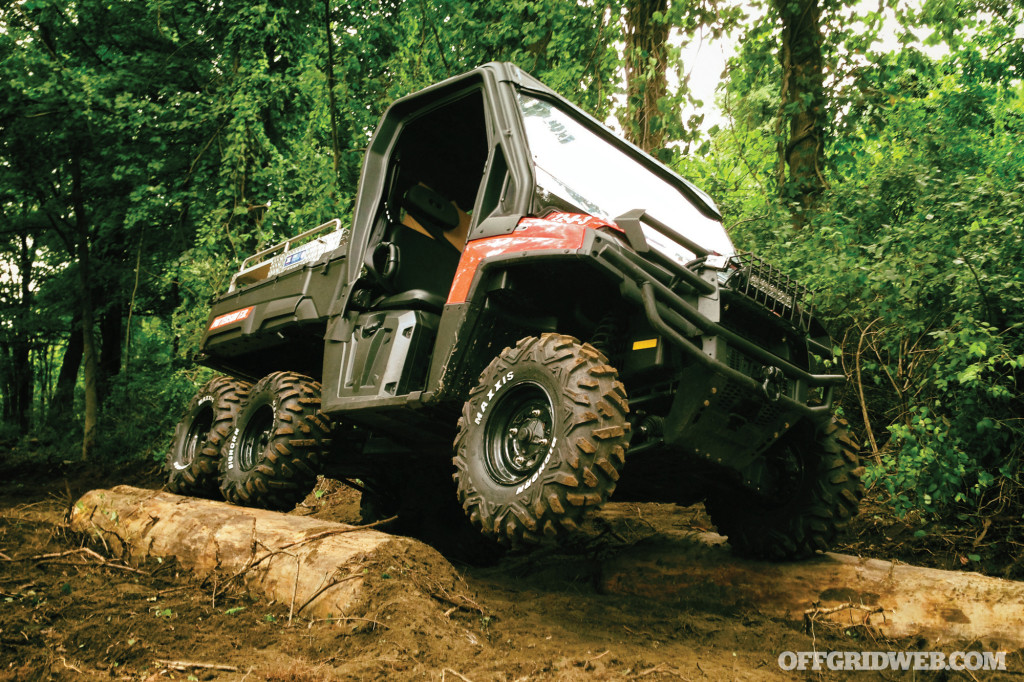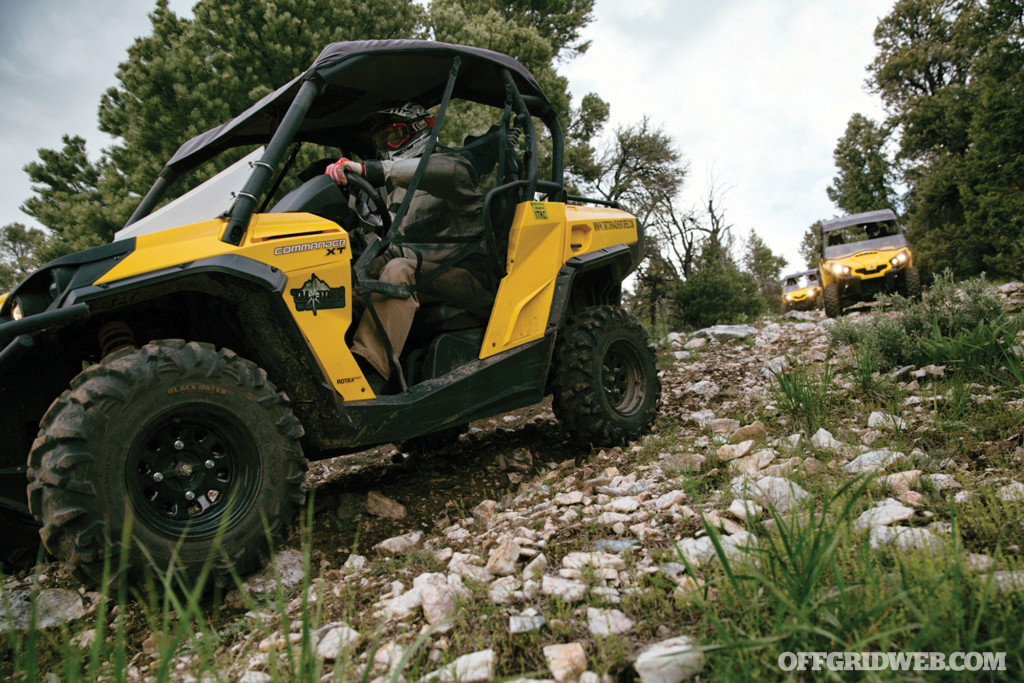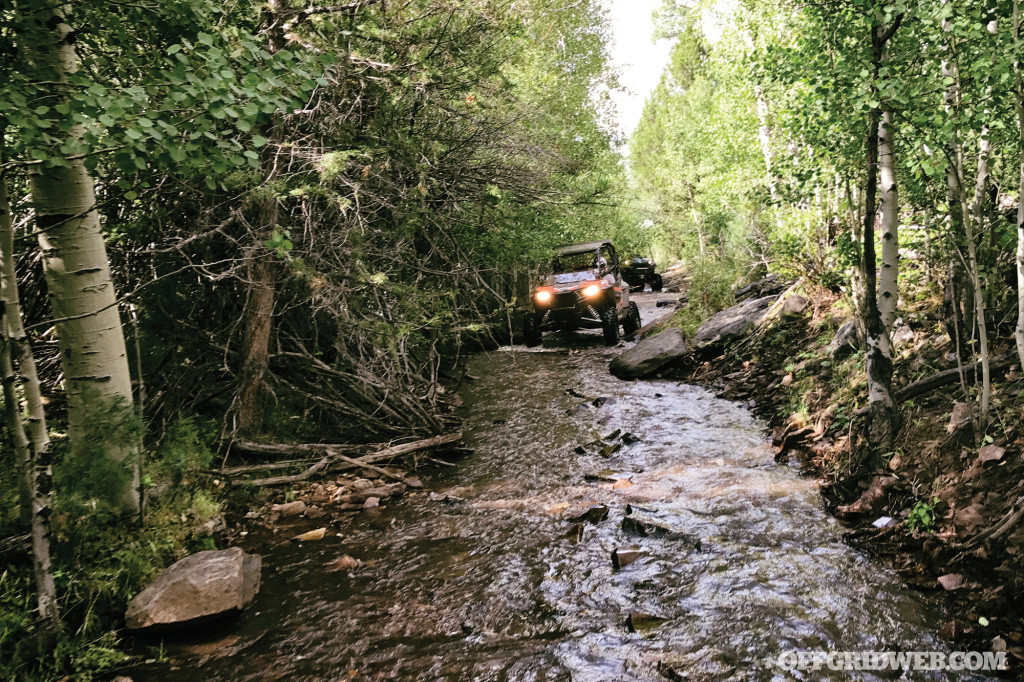RECOIL OFFGRID Transportation Off-Grid Driver’s Ed: Learning to Drive a UTV
In This Article
Photos courtesy of Joey Nickischer and Team TORN
In Issue 26 of RECOIL OFFGRID we discuss using a Utility Terrain Vehicle (UTV) as a potential bug-out vehicle. UTVs are quick, agile, and designed to handle all but the toughest ground conditions. They offer all the off-road benefits of their ATV siblings, but unlike ATVs, UTVs can accommodate between two and four passengers and most models feature a pickup-style bed for additional cargo. All but the most bulked-up UTVs can fit inside a two-car garage and be hauled on a trailer.
While they offer many benefits, some people are easily misled to believe the only prerequisite to driving a UTV is having a license. Wrong answer. Just like novices who pilot a boat or personal watercraft for the first time, thousands of people are injured every year who mistakenly assume that driving a UTV is just like driving a car on a dirt road. Before you go down the proverbial road of purchasing one, we’d like to give you some advice. Like anything with an engine, UTVs require skill, experience, and more than a little respect to be used safely and effectively.

We spoke to two off-road experts specializing in the selection, fitment, and use of UTVs in austere environments. They gave us some pointers on the perils of driving UTVs under various conditions as well as what to look for in a UTV you may have to stake your family’s survival on.
RECOIL OFFGRID: What are the biggest differences between driving a UTV and driving a car?
Joey Nickischer: The biggest difference is that a UTV does not handle like a car. Aggressive off-road tires, high ground clearance, and a narrow wheelbase, while assets in the off-road environment, give the UTV a higher center of gravity compared to the average road vehicle.
“Muggs” McCoy: For starters, the characteristics that make a vehicle suitable for off-road and rough terrain often detract from on-road performance. Flexible suspensions with long travel, high ground clearance, and heavier driveline components can cause a UTV to respond to driver input in ways that the uninitiated may be unprepared for. The UTV’s higher center of gravity and narrower width means less stability. This, in addition to their increased suspension travel, causes the UTV to have more body roll when swerving or cornering than a typical car.
If the UTV driver isn’t accustomed to this feeling they may not know how to correctly manage it. This can cause them to either over-correct, which causes the UTV to sway and swerve back and forth, making the vehicle hard to manage, or, they interpret the body roll as impending rollover and instinctively apply the brakes, unintentionally increasing the chance of the back tires catching on rocks or dirt buildup. As a UTV driver, you need to start out slowly, get a feel for the suspension, and understand what your vehicle is doing underneath you.

Inexperienced drivers often feel the temptation to take unnecessary chances with a UTV to test its capabilities. In an...
Do the rules change when the environment changes?
JN: Absolutely. Speed can be your friend in certain circumstances, such as when driving through mud. That same speed can lead to uncontrollable driving in wet/icy areas.
MM: The terrain dictates how you must drive. In a sandy environment, the vehicle is going to react a little slower and follow any grooved path in the sand (the path of least resistance). If that “line” is good, stick with it, but if not, it can be difficult to drive out of. Driving out of grooved or rutted terrain in the sand, mud, or hard packed dirt requires caution. The best approach is to keep your eyes up and look ahead for the best place to exit; commit to your decision and don’t second-guess yourself (hesitation can lead to its own issues).
Be prepared to manage abrupt steering jerks and try to keep the wheels as straight as possible. In rocky terrain, you need to slow down. Going fast over rocks can quickly overwhelm and even damage your suspension. The size of the rocks dictates how much you must decrease your speed. Slowing your speed down enables you to successfully negotiate obstacles and increase your vehicle’s survivability.
Your vehicle’s electrical components are exposed and can easily get wet and short out. Additionally, you could get water in the air intake and sucked into the engine, creating a very bad day. The best approach for a water crossing, if the situation dictates, is to get out of the vehicle prior and test the depth and bottom composition of the water. Determining the water is at a safe depth ensures it will not reach the electrical components and, more dramatically, ensures you won’t drive into a huge hole. Once you’ve check the water”s depth and bottom composition, drive through slowly and attempt to keep the water as low and still as possible. Too many people worry about getting stuck during a water crossing and try to “gun it” to get across. That’s the worst thing you can do.

Team TORN provides UTV as well as motorcycle training in various scenarios as part of their curriculum.
When you teach UTV driving, what are the most common mistakes you see students make?
JN: The average person isn’t accustomed to driving on steep slopes, boulder fields, and other low-traction terrain. It’s a completely different driving experience. When surmounting obstacles, it’s common to have one foot on the gas and the other on the brake. You want to climb your obstacle with control and ensure you don’t start to slip backward.
The steering wheel can also kick back violently and unexpectedly when the front tires encounter certain obstacles. As such, it’s imperative that you keep your thumbs outside of the steering wheel. The common 10 and 2 or 9 and 3 hand positioning is fine, but make sure your thumbs are out if you don’t want a very painful thumb injury.
Another thing that takes getting used to is not being able to see the terrain and having to rely on the spotter. The spotter can see a lot better than you can, and it’s imperative that you trust him or her. If your spotter says turn the wheel left and move forward 12 inches, then you need to turn the wheel left and move forward 12 inches. When the spotter says stop, then stop! One of the drills I have my students do is driving through a typical traffic cone driving course while blindfolded. This way, they learn to trust the spotter and to only do exactly what the spotter says, lest they “crash” into a cone.
MM: The greatest and most dangerous mistake students make is being overconfident in their abilities. The similarities with a car (the side-by-side seats, seatbelts, steering wheel, etc.) give first-time drivers the impression the UTV will handle like a car, and provide the same level of protection. Students end up driving too fast which gives them little to no time to react to the terrain in order to correct mistakes before they lose control.
For people who are considering buying a UTV as a potential survival tool or bug-out vehicle, what would you recommend they look for?
JN: You want a vehicle that has known durability, easy-to-find spare parts, and is easy to service/repair. The best-selling UTV is the Polaris Ranger and they even make a special line of vehicles strictly for the U.S. Government. Those vehicles are built around commercial off-the-shelf (COTS) components.
Something else that could be mentioned is drive systems. Many of the common UTVs feature a belt-drive CVT drive system. These transmissions require a certain amount of engine rpm before the belt engages between the sheaves of the transmission. Having inadequate engine speed coupled with a difficult to turn tire can lead to belt damage or failure, a term known as “smoking the belt.” CVTs are found on the Polaris Ranger, Can-Am Defender, John Deere Gator, and others.
Few UTVs utilize a hydraulic drive system, like those found on hydrostatic tractors. With these, the engine runs a hydraulic pump, which funnels fluid to the drive system. They tend to be very torquey in the low end. The Kubota RTV uses this system. As an added bonus, the hydraulics can also be used to power other components.
Some UTVs use a gear drive, which is a little more familiar to the average driver. However, unlike modern vehicles where you can switch between 2×4 and 4×4 on the fly, you usually cannot do so on gear-drive UTVs. The Honda Pioneer uses this type of drive system. As usual, safety should be discussed. Always, always, always wear your seatbelt. You should also consider upgrading the three-point seatbelt to a four-point harness style.

Before attempting any water crossings, get out and check the depth of the water first to avoid drawing water into the...
The harness-style seatbelt will hold you in position a lot better in the event of a rollover. In UTVs with a full rollcage, you should still wear a helmet, even if it’s only a half helmet. And never, never, never hold onto the rollcage. Only hold onto manufacturer-specified grab bars. If the vehicle rolls over while you have a death grip on the cage, there’s a very good chance your hand will be crushed and amputated. And to go along with that thought, don’t try to stop a rollover by sticking your hand or leg outside of the vehicle. You’re not going to hold up, or even slow down, a 1-ton (or heavier) vehicle that is rolling over. You will most likely lose that limb in the rollover.
MM: The No. 1 thing I advise people to look for in a UTV is durability. If SHTF, you won’t have the luxury of taking the UTV in to get serviced or parts replaced. Therefore, look for a brand with high durability ratings. Don’t simply look at popular opinion on the “cool factor” or the latest gadgets and features. Get under the vehicles, look at their components and how well they are made. Research the engine — how does it perform? What are the top service issues? Even for new UTVs, most of their engines are the same or similar ones that have been used in snowmobiles for years.
Joey Nickischer
A nationally certified Search and Rescue Technician 1 Lead Evaluator (SARTECH1), Joey Nickischer is also a retired New York City Police Department detective. Over the course of 20 years, his assignments in NYC have included uniformed patrol, Tactical Patrol Force, Citywide Task Force – Plainclothes and Pickpocket Squad. Additionally, for 14 years, he was assigned to the Fugitive Enforcement Division, where his job was to track down people who didn’t want to be found. He currently works as a lead technical rescue instructor for RIT Safety Solutions, AAA Emergency Supply, and Newburgh Rescue Supply.
On the volunteer side, Joey is the Chief of New York Search & Rescue and has led his team through searches ranging from the Word Trade Center Terrorist Attacks, to Hurricane Katrina ravaged New Orleans and through the Catskill Mountains of New York. He serves as a team leader with both the Westchester County Technical Rescue Team and the Putnam County Technical Rescue Team, as well as an Assistant Chief with the Patterson Fire Department.
“Muggs” McCoy
The owner of Team TORN (Technical Off Road Navigation), Muggs is a retired, 24-year veteran of the military. With 18 years in special operations, Muggs’ professional experience spans a broad range of technical and tactical skills essential for training the nation’s elite forces. Throughout his career he has trained hundreds of members of the special operations community in tactical mobility, as well as developed and utilized mobility tactics, training and procedures in both Iraq and Afghanistan. Muggs began motorcycle and UTV racing during his military career, culminating in the country’s longest off-road race: Vegas To Reno.
During his military training, Muggs noticed a gap in instruction that’d link superb riding training and tactical mobility needed for special operations professionals. He then approached race-professionals Jimmy Lewis and Shane Watts to create a program that combines the necessary skills for riding with the tactical knowledge necessary for real-world missions, thus starting Team TORN. www.teamtorn.com
Don’t miss essential survival insights—sign up for Recoil Offgrid's free newsletter today!
Read articles from the next issue of Recoil Offgrid: Issue 27
Read articles from the previous issue of Recoil Offgrid: Issue 25
Check out our other publications on the web: Recoil | Gun Digest | Blade | RecoilTV | RECOILtv (YouTube)
Editor's Note: This article has been modified from its original version for the web.
 STAY SAFE: Download a Free copy of the OFFGRID Outbreak Issue
STAY SAFE: Download a Free copy of the OFFGRID Outbreak Issue
No Comments